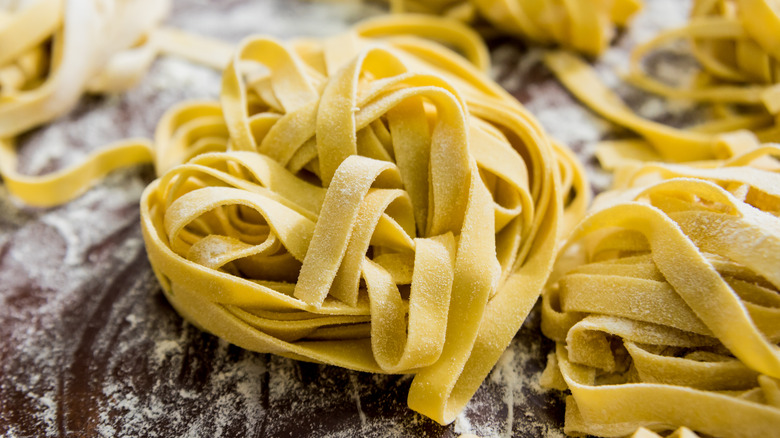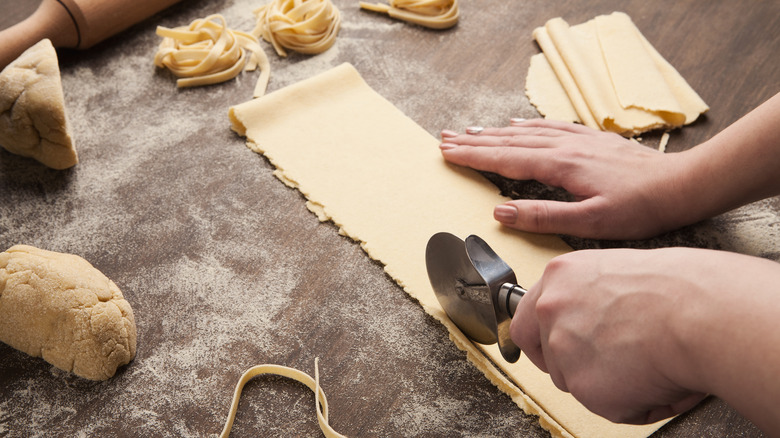Why Measurements Are Crucial When Making Homemade Tagliatelle
If you want to make authentic tagliatelle pasta at home, you're going to need to break out your metric ruler, because there are specific, down-to-the-millimeter measurements you'll need to follow to ensure its key elements shine through. Though often confused for fettuccine, tagliatelle is a rough textured pasta that clings to sauce but is easy enough to wrap around the tines of a fork.
In 1972, the Confraternità del Tortellino and the Accademia Italiana della Cucina petitioned the Bologna Chamber of Commerce to register an official recipe for tagliatelle that legally cemented a rule that the pasta should be around 7 millimeters wide and expand to around 8 millimeters wide once cooked. The thickness of the pasta has never been specified, though the general consensus is that it should be on the thinner side, between six to eight-10ths of a millimeter.
It would be easy to think that, as a result of these strict standards, tagliatelle is quite difficult to make. But all that is required are practiced hands, the right equipment, and a degree of patience.
Making authentic tagliatelle
Here's the thing about making authentic tagliatelle at home: You're going to have to cut it by hand. Most pasta machine attachments that advertise cutting tagliatelle do not cut it to the specified width. In fact, they are much slimmer, somewhere in the ballpark of 2 millimeters. A better bet would be to find a manual cutter with multiple blades. Sometimes called a pasta bike, these come with 5 blades that can be widened or slimmed to the specific width, then drawn along the length of the pasta sheet to get the right cuts. You can also achieve this with a knife, a metric ruler, and a fair amount of patience.
Another thing you'll want to be sure of is to have an unfinished, wooden surface on which to work the tagliatelle dough. The pasta is meant to have a rough exterior texture that will make the sauce cling to it like glue. The wood surface allows for this texture, while also absorbing any excess moisture found in the pasta dough. Simultaneously, you don't want the pasta to be too dry. A dry dough is difficult to work with and can easily fall apart when rolled out.
While it may seem like a chore, a little practice will have you cutting beautiful ribbons of authentic tagliatelle in no time. And, if you've got a good eye, the next time you're in Bologna, you'll be able to spot any wrong-doers cutting their pasta too thin.

